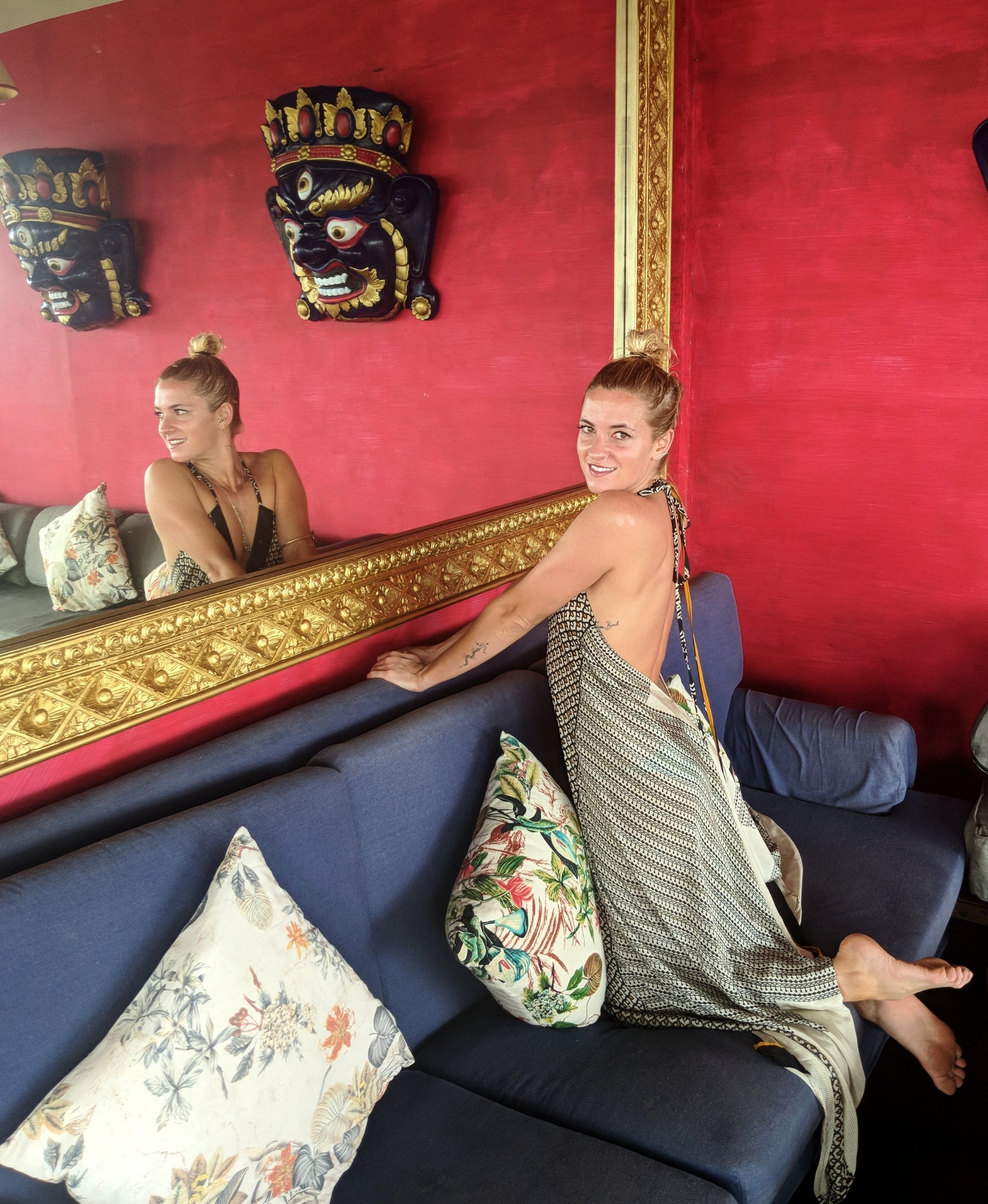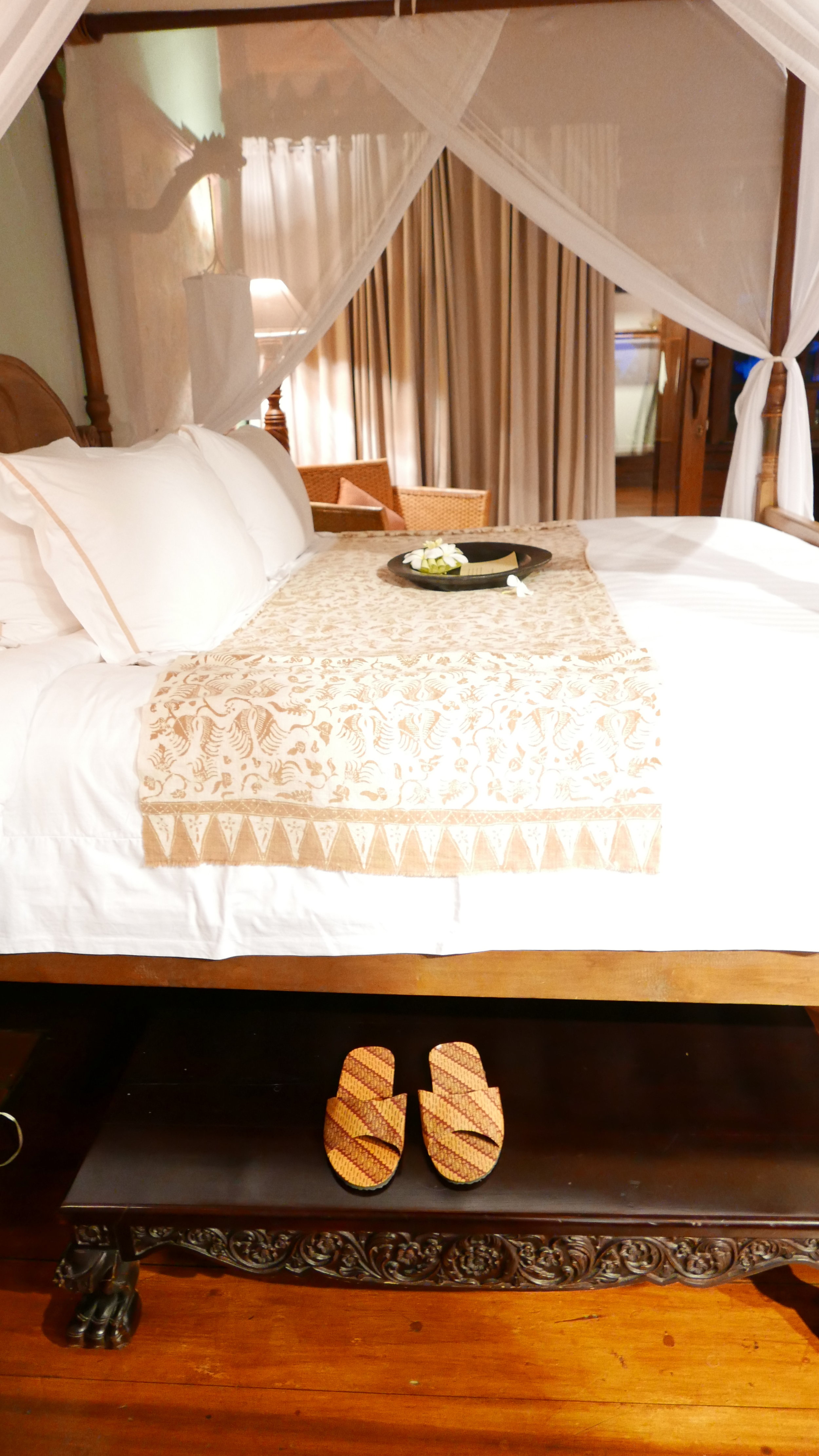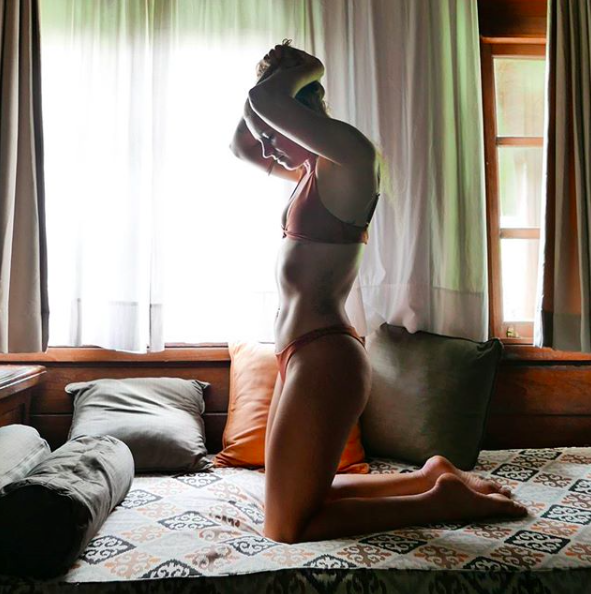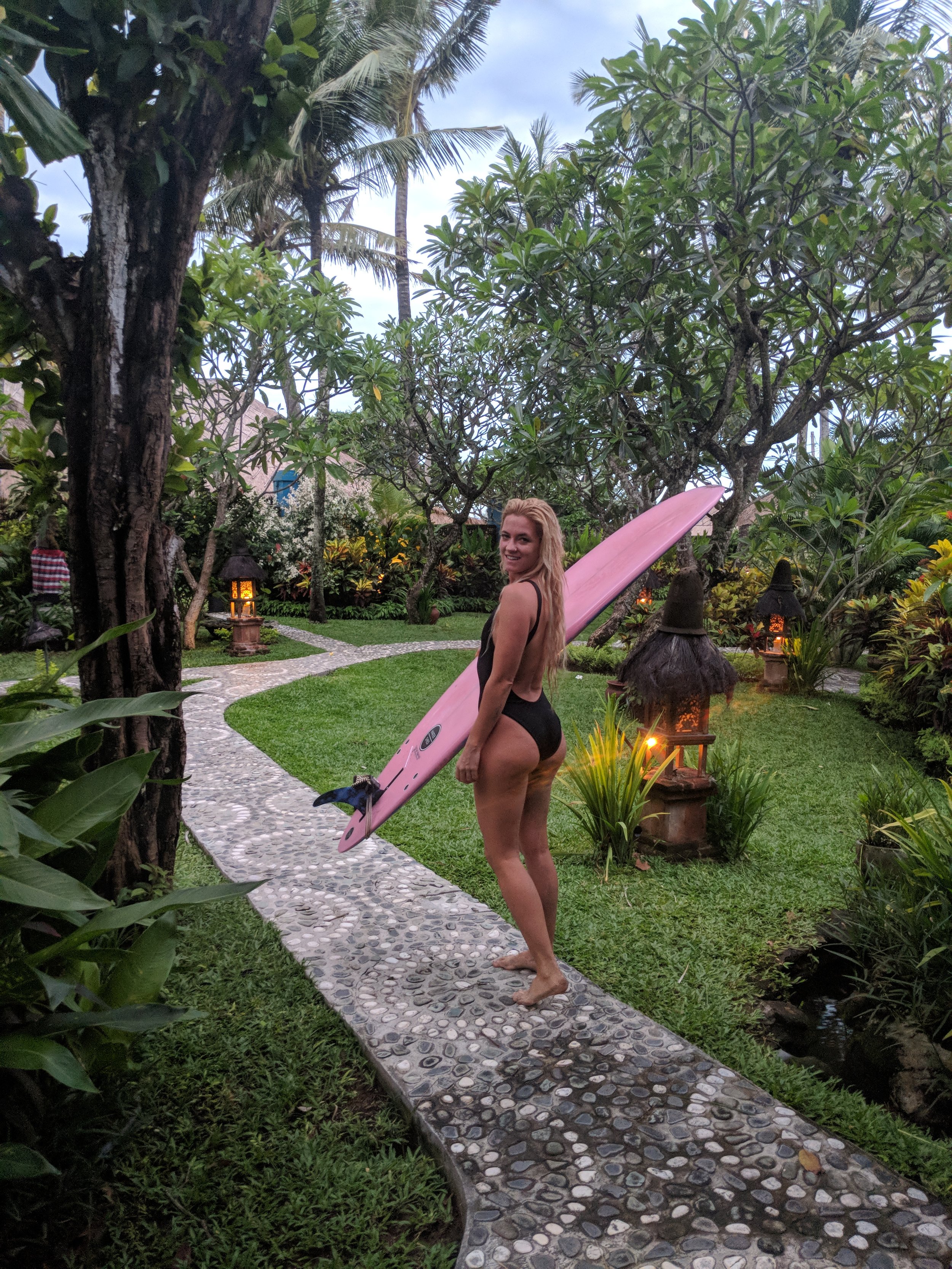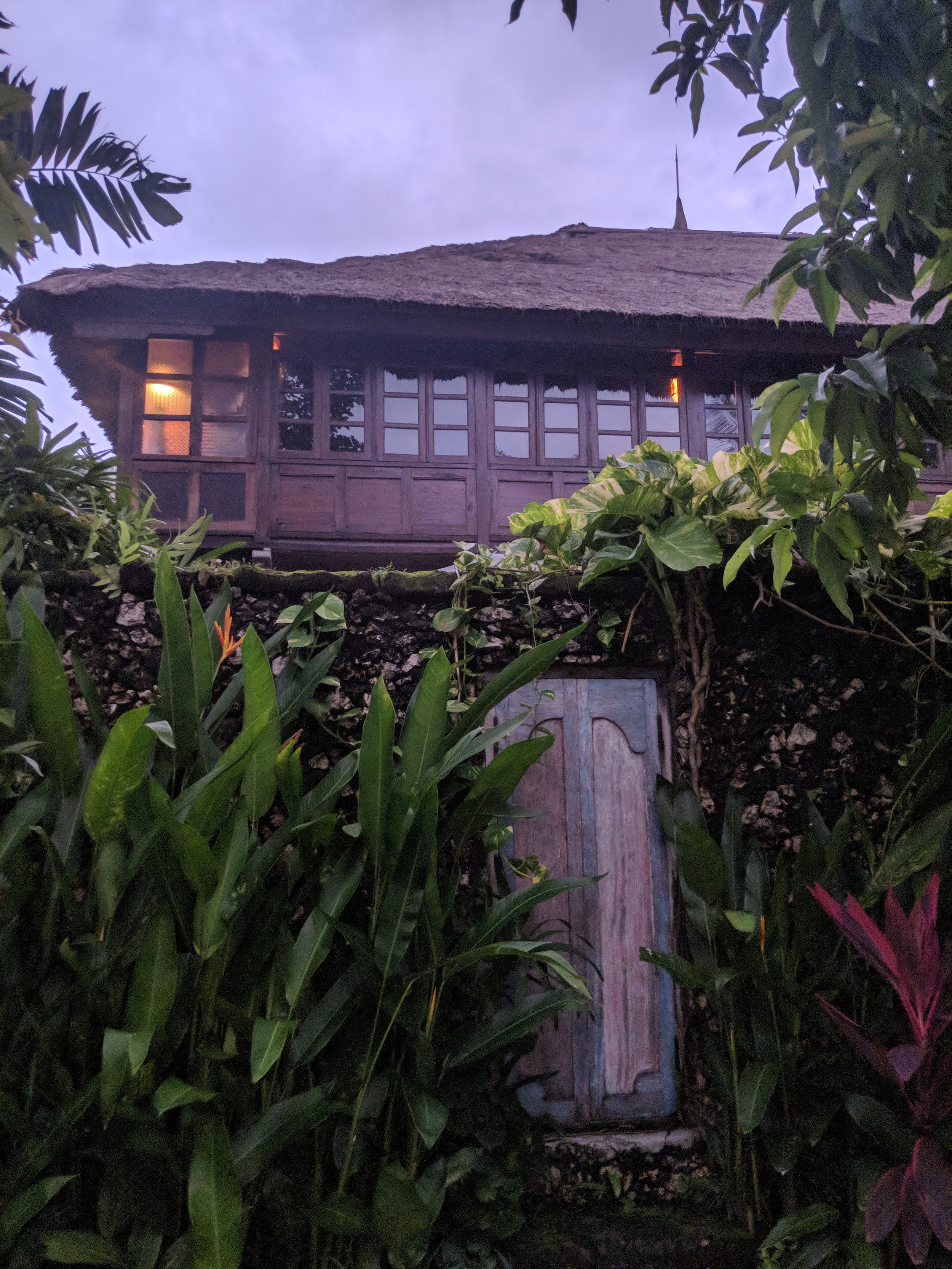THE ROOTS OF WELLNESS, BALINESE STYLE
Wellness, in its many guises, fads and fashions, seems to have well and truly adopted its western assumed cloak of green shakes, downward dogs, gluten-free-gilded £15 a-pop avocado eateries and butt-skimming lycra.
I was keen to explore wellness and it's real roots and meaning through seeking out it's authentic Eastern beginnings, the real heritage of what the big W truly means. Trussing up by bag, I set forth for the heady, wellness and surf soaked shores of Bali, and the Tugu Spa Hotel. Well versed in Bali's surf and adventure culture, I was excited to delve deeper into Bali's roots, its history and the truer meaning and heritage of "wellness".
The Tugu, owned by an Indonesian who has been collecting antiques since the early 1960s, is home to one of the largest original art collections in Southeast Asia. Setting foot into it's impressive grounds, an Indiana-Jones esque level of intrepid discovery quickly beings, as within every nook and cranny of the grounds are collected pieces of Indonesian history, some dating 100's of years back. The main building, the Bale Agung, features distinctive architecture inspired by a secluded village in Central Bali, whereas some of the public areas are original hundreds-years-old structures moved in entirety into the property.
A showcase of Indonesia and Bali's fascinating history, something not many tourists may look into, forms an intriguing backdrop to a look at the heritage of wellness, from it's birth-place in Indonesia. With original artefacts from the Puputan War including the desk used to sign the Dutch/Balinese war treaty and a salvaged Love Temple, the "Bale Sutra" – a whole Kang Xi period temple from 1706 saved from demolition, the inner explorer in me was in artefact heaven.
For centuries the people of Java, the Peranakan, and the people of Bali have been adhering to their authentic indigenous health treatments that we now know and call “spa” in the West. These traditions combined aspects of spirituality with the physical healing arts to achieve the ultimate in mind, body and soul harmony to enhance total deep relaxation. For the more well-off, a certain ambience was created, some called it ‘magic’ ✨, whereby the secluded atmosphere and the ministrations of the healer would bring a kind of hypnosis on the patient and it would send them into a state of peacefulness.
Healers, knowing much about the power of nature, it's affect on our sense of smell, the ability of its colors to elevate or soothe the mind, used ‘magical’ flowers to create the atmosphere of the treatment rooms. These flowers, Frangipani, Tropical Magnolia, Rose, Jasmine, and Ylang Ylang were believed to be the flowers of the supreme deities. Incense, or ‘dupa’ as it is called, also was known to have magical properties, some of which are used at specific times and for specific purposes. The Çiva, called ‘kemenyan’ is believed to have a powerful effect on the soul when burnt under an old banyan tree on a Thursday evening.
Long before the Spa concept was introduced in the West, the Javanese were incorporating flowers and incense to stimulate the spirit and accelerate the relaxation of the mind. Only after the relaxation process begins, the physical treatment could commence and often short prayer or ‘mantra’ would accompany it. It was believed that this approach allowed the treatment to really penetrate the soul, and when the hands began to touch the body, they brought a mysterious power that is increased as the rhythmic movements of the hands massage the entire body.
The Balinese believe that to bathe in water perfumed by the fragrant petals of the frangipani flower under the light of the full moon will wash away your impurities. Purnama, in Balinese means Full Moon, and Tilem means New Moon. These two days are special according to Balinese belief, and during these moons, purification ceremonies are arranged to wash away sins, and celebrate “Rwa Binneda” – the two energies of life, the good and evil, darkness and brightness. During the Purnama, Balinese worship the Goddess Sang Hyang Chandra, whereas during Tilem, they pray to God Sang Hyang Surya.
Through generations, for more than hundred of years, the Javanese were doing research and observations through trials and experiences to get the real use of all those herbs and spices which are found in their surroundings. This belief was quickly spread among the villagers especially in Central Java which almost all of the villagers use “Djamoe” in their daily life for healing and rejuvenation. Djamoe, a mixture of traditional herbs and spices, which are used for healing and rejuvenation. Djamoe includes mixtures that are drunk and mixtures that are applied to the outer part of the body. Traditional ‘Djamoe’ comes from the island of Java, and have evolved since hundred of years through generations.
The heady, intoxicating history shared with me makes for a stimulating immersion into the post-surf wellness experience, settled in the woozy, frangipani scented grounds of the Tugu. My love of wellness and health is wholly linked to a deeper experience, and a discovery of it's more magical roots in Indonesia left me with a more mystically rewarding understanding. I can't wait to explore this beautiful culture even more 🌙🌙🌙🌙🌙
With Thanks To The Tugu Bali
Fly To Bali with Emirates, Qatar, Norwegian Air




